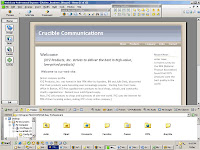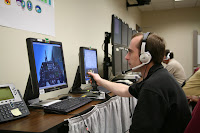FILE COMPRESSION
HEAD CRASH
A head crash is the hard-disk malfunction that occurs when the read-write head of a hard disk drive, which normally hovers a few microinches from its rotating platter, gets in contact with it, which will result in permanent and usually fatal damage to the magnetic media on the platter surface. It can also happen when dust or debris accumulates on the surface of the platter. If that happens, both the head and the disk will have to be replaced. Also, depending on the severity of the crash, some or all of the data stored on the drive will be lost.
INTERNET HARD DRIVE
Internet hard drives enable the users to backup their files on the Internet through many backup servies available, which means that the files uploaded, such as pictures, documents, music and videos can be accessed from any computer, as long as it is connected to the Internet. With that, backing up files on the Internet may take a long time, as it depends on the speed of the internet. Likewise, uploading your file back on the computer may also take a long time. However, what internet hard drive offers is the freedom to retrieve any document you need from anywhere in the world.
OPTICAL DISK DRIVE
The optical disc drive (ODD) is a disk drive which uses low-powered laser light or electromagnetic waves near the light spectrum to read or write data to or from optical discks. Optical disc drivs are circular, flat, glass or plast disk in which data can be stored in the form of light and dark pits. When the laser beam reads the pits, data can be accessed. They can store up to 6 gigabytes of data, and are a part of stand-alone consumer appliance such as CD and DVD players and recorders. It has mostly replaced magnetic tape drives and floppy disk drives because of the low cost of optical media and the near-ubiquity of optical drives in computers and consumer entertainment hardware.
SOLID-STATE STORAGE
A solid-state storage is a type of nonvolatile, removable data storage device which uses solid-state memory to keep persistent data. It is distinguished from traditional hard disk drives, which are electromechanical devices containing spinning disks and movable read/write heads since solid-state storage does not contains any mechanical parts. Thus, data transfer to and from solid-state storage media takes place at a much higher speed than electromechanical disk drives do. It is also less susceptible to physical shock, quieter, and have lower access time and latency, as it uses integrated circuits rather than magnetic or optical media.













































